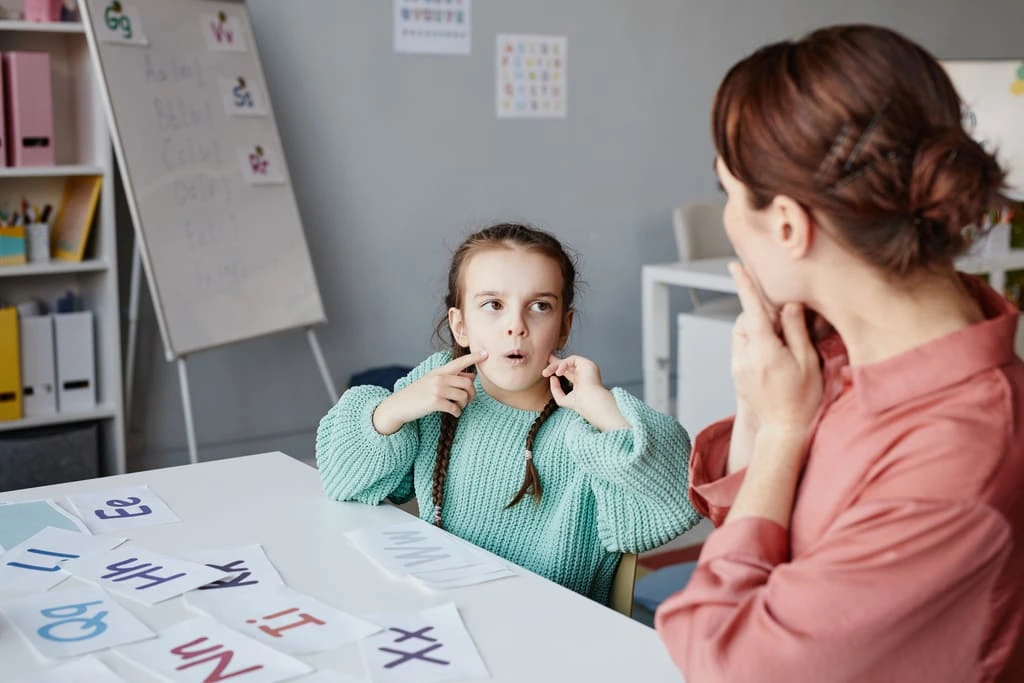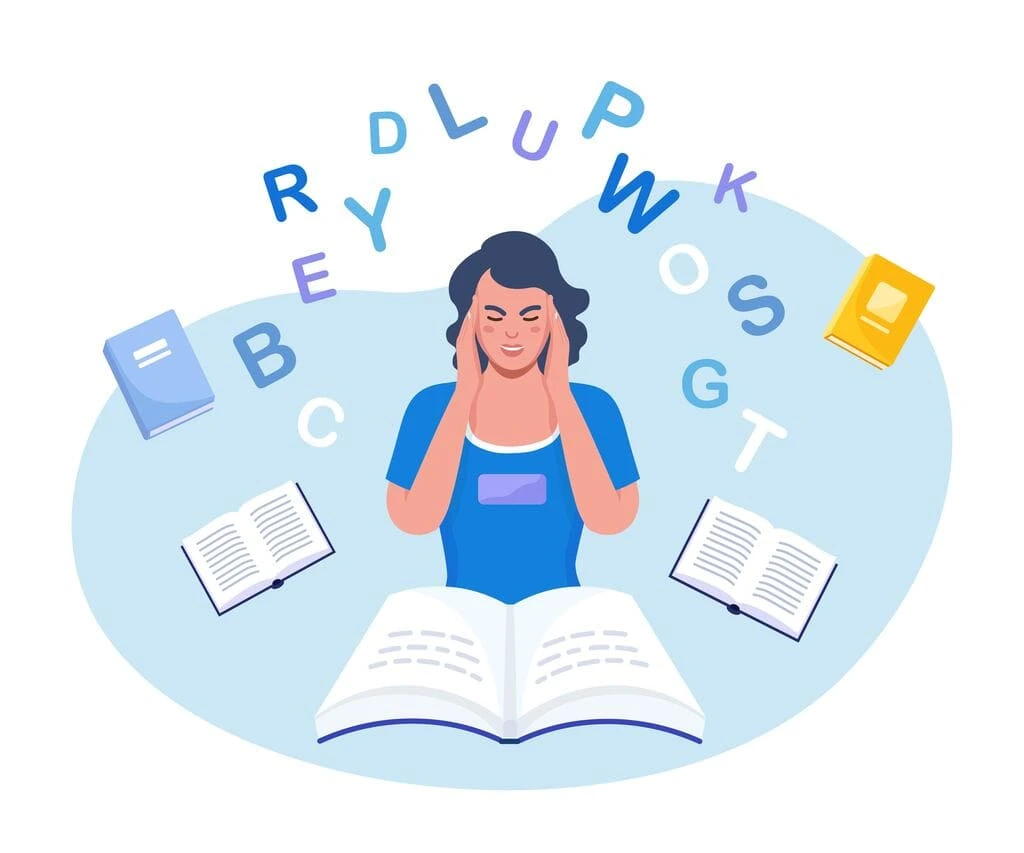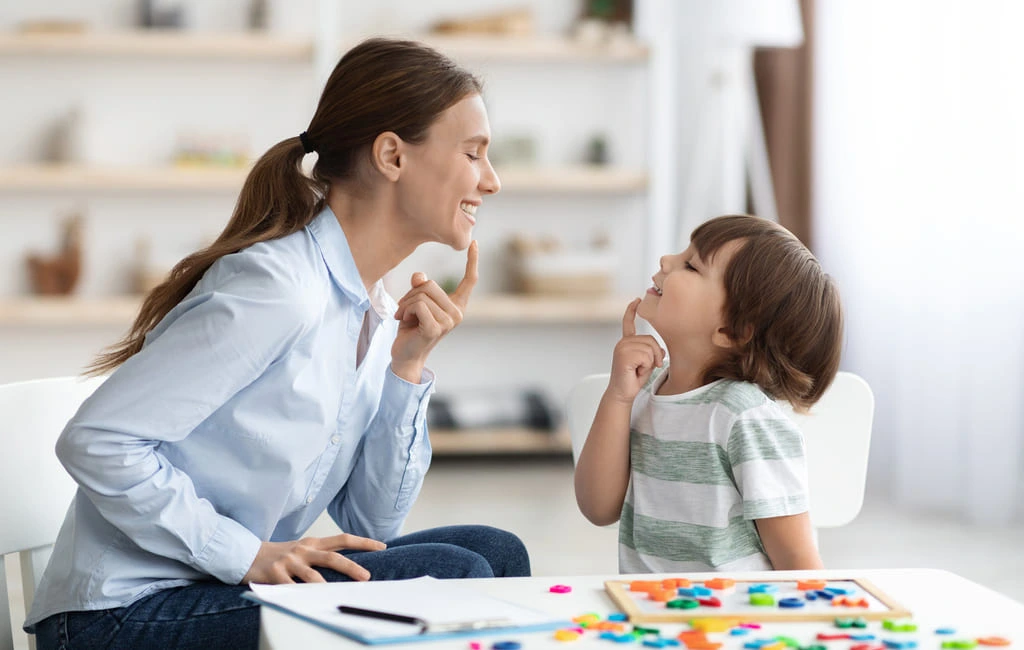Learning Disabilities and Their Impact on Communication
Learning disabilities can deeply affect how people connect with the world and those around them, often creating unseen barriers in communication. For someone with a learning disability, forming sentences, understanding language, or recognising social cues can feel challenging. This can lead to feelings of isolation, as they may struggle to express their thoughts or emotions fully.
Yet, each person has a unique voice and perspective, even if they communicate differently. Speech and language therapy allows people to express themselves and build meaningful connections. Speech and language therapists (SLTs), families, and caregivers collaborate to find creative, personalised ways to make communication accessible — through visuals, gestures, alternative communication devices, or simply with patience and understanding. With these tools, the world opens up, and what was once a source of frustration can become an opportunity for empowerment.
In supporting people with communication difficulties, compensatory strategies bring a humanised approach to learning new and different ways to communicate. This may involve using picture boards, communication books, or devices designed to support or produce speech, helping to enhance verbal communication skills.
How Speech and Language Therapy Supports LD
Speech and language therapy is highly individualised, as everyone with a learning disability is unique, with different needs, abilities, and goals. An assessment typically includes evaluating the person’s language, communication preferences, cognitive abilities, and sensory needs to develop a personalised therapy plan. Integrating SALT within a broader therapy team — such as occupational therapists and PBS practitioners, as done at Leaf Complex Care — can provide a more holistic approach. This helps address all facets of a person’s behavioural and communication needs, providing well-rounded support.
⇒ Before we dive in, take a moment and read about The Role of Speech Therapy in Reducing Behaviours of Concern.
Enhancing Communication Skills
Speech and language therapy can significantly enhance communication skills for people with learning disabilities. SLTs use evidence-based approaches tailored to the person’s needs and abilities, following a structured, multi-step process to provide consistent support and measurable progress. The therapist begins with a comprehensive assessment to evaluate and understand the person’s communication difficulties and needs. They evaluate various aspects of communication, including the person’s:
Expressive language – How people convey their thoughts and needs.
Receptive language – How people understand spoken and written language.
Social interaction skills – How people engage in social interactions, including eye contact, turn-taking and understanding body language.
Speech clarity and fluency – How clearly people speak, including challenges like stuttering or articulation difficulties.
Once the assessment is complete, the language therapists work with the person and their families to set personalised communication goals. These goals could include increasing vocabulary by a certain number of words, improving social skills like maintaining eye contact or learning to use alternative communication devices properly. This is achieved using specific therapy techniques, which should always be tailored to individual needs and preferences. Methods that can significantly enhance people’s communication and language skills are:

- Language exercises
- Modelling and imitation
- Augmentative and Alternative Communication (AAC)
- Play-based therapy
- Social skills training resources
Improving Reading and Writing Skills
Whether improving people’s communication or reading and writing skills, the first step is always to complete an accurate assessment. The speech and language therapist evaluates how well the person understands what they read, their ability to identify and manipulate sounds, their ability to write, spell and use grammar and how easily they can recognise sight words. Based on this, a personalised plan can be developed.
SALT uses proactive interventions based on awareness that can encourage people to overcome challenges gradually by using:
Phonics and phonological awareness – Sounding out words, rhyming games, or syllable clapping.
Aids to help build vocabulary and sight word recognition – Word mapping techniques, flashcards, visual aids or contextual learning.
Strategies for encouraging reading comprehension – Pre-reading questions, guided reading, or summarisation.
Methods for developing writing skills – Graphic organisers, mind maps, drawing pictures, breaking writing tasks into steps, writing prompts and spelling support.
Throughout SALT, therapists offer positive reinforcement to build confidence and motivation. Celebrating small achievements, such as successfully reading a new word or completing a writing task, encourages continued progress and fosters a sense of accomplishment. By using a structured, supportive approach that integrates these strategies, speech and language therapists can help people with a learning disability improve their reading and writing skills.
Boosting Confidence and Independence
Person-centred and strength-based approaches set the tone for creating capable environments. This can help people of all ages living with a learning disability feel valued and see themselves in a positive light, which builds the foundation for their confidence. Speech and language therapists start by:
Setting achievable goals – SLTs work collaboratively with the person and their support network to ensure their goals are meaningful and relevant to their daily life, giving people a greater sense of control and purpose.
Positive reinforcement – Praising or celebrating small successes reinforces positive behaviour and skills. Speech and language therapists use verbal affirmations, visual progress charts, or reward systems to motivate people.
Encouraging family involvement – When family members or caregivers actively participate in the therapeutic process, it fosters progress at home and in the community. SLTs often guide families in supporting communication goals in daily routines, empowering people in a familiar and supportive environment.
Encouraging self-expression and choice-making – Using picture boards, communication devices, or apps can help people who struggle with verbal communication. These tools provide alternative ways to express needs, preferences, and feelings.
Incorporating AAC Tools – Therapists may use Augmentative and Alternative Communication (AAC) devices to help people communicate their preferences. Knowing they have a voice in decisions—like what to eat or how they feel about a topic—fosters a sense of independence.
Celebrating progress and resilience – Acknowledging how people have overcome challenges, adapted to new tools, or achieved their goals contributes to a stronger self-image. It promotes a positive view of future growth.
Building Social Communication Skills
Through role-playing, visual aids, and practical exercises, people with a learning disability can learn how to start and maintain conversations, recognise and respond to facial expressions, and understand personal boundaries in social interactions. SLTs also work on emotional regulation, teaching coping strategies that support people to manage emotions like frustration or anxiety, making social interactions more comfortable and controlled.
Social stories and visual supports, like social scenarios and visual reminders, further reinforce these skills by making abstract social rules transparent and predictable. Family involvement is encouraged so that support staff can reinforce learning in everyday situations, ensuring that new skills are practised consistently. With SLTs’ guidance, people with a learning disability gain the confidence and tools to connect with others, advocate for their needs, and enhance their quality of life through improved social skills.
Common Speech and Language Challenges in Learning Disabilities

The relationship between learning disabilities and speech and language development is profound and multifaceted. Many learning disabilities are language-based, affecting the ability to understand and use spoken and written language. According to research, in the UK, approximately 1.5 million people have a learning disability, of which among adults, about 2.16% and for children 2.5%. The general prevalence suggests that between 50% to 90% of people with a learning disability experience communication difficulties.
The high prevalence rates indicate a substantial demand for speech and language therapy services in the UK. The NHS has reported long waiting lists for speech and language therapy services, specifically for children and young people. The challenges people experience directly affect their communication, social interactions, and overall quality of life. Here are some of the most common challenges:
Articulation Challenges
Articulation challenges are common and can make it difficult for people to produce certain sounds, which may make speech harder to understand. This challenge can affect their confidence and make communication with others frustrating, as they may need to repeat themselves to be understood. These challenges are characterised by ‘errors’ in the way sounds are produced, typically manifesting as:
Substitution: Replacing one sound with another (e.g., saying “wabbit” instead of “rabbit”).
Omission: Leaving out a sound in a word (e.g., saying “nana” for “banana”).
Distortion: Producing a sound differently (e.g., lisping).
Addition: Adding an extra sound within a word (e.g., saying “buhlack” for “black”).
Expressive Language Difficulty
People with expressive language challenges have difficulty understanding information and feelings and conveying ideas. They may struggle to form coherent sentences, use many words, or find the right words. This can impact their ability to share thoughts fully, leading to frustration and potential misunderstandings with others.
Delayed Speech and Language Development
Many people with learning disabilities experience delays in reaching speech and language milestones. They may start speaking later than their peers, have a smaller vocabulary, or need support with sentence structure. These delays can impact their ability to express themselves, making it harder to convey thoughts and needs.
⇒ Read more about speech therapy and its impact.
Swallowing Difficulties
Swallowing difficulties, or dysphagia, are notably prevalent among people with learning disabilities. The prevalence rates vary significantly depending on the study population and methodology. Estimates range from 36% based on speech and language therapy caseloads to over 70% in inpatient populations. One of the government’s publications indicates that about 15% of adults with learning disabilities require support with eating and drinking, and 8% of people known to learning disability services have dysphagia. In specific populations, such as older adults with intellectual disabilities, over 40% have been classified as having swallowing difficulties. For children with intellectual disabilities and severe cerebral palsy, the prevalence of dysphagia can be as high as 99%.
Knowing these numbers and data indicates that swallowing difficulties are truly a significant concern for people with a learning disability, affecting a substantial portion of the population. The complex nature of dysphagia impacts their quality of life and results in social isolation, reduced participation in social gatherings, feelings of loss and frustration, and loss of autonomy and control. SLTs can provide swallowing therapy, exercises, adaptive equipment, and dietary modifications for people with learning disabilities who experience dysphagia. This support can improve health outcomes, enhance quality of life, and reduce the risk of severe complications.
Bespoke SALT Support for Learning Disability
At Leaf Complex Care, our SLTs provide bespoke support for people with learning disabilities. Our experienced therapists work with young people and adults who are neurodivergent, including people with ADHD and autism. They also support people with mental health needs, social-emotional mental health (SEMH) challenges, and people within the criminal justice system. We understand that each person’s communication needs are unique and deliver human-centred, respectful, and individualised therapy.
By collaborating closely with people, families, and support networks, we create tailored interventions that enhance self-awareness, autonomy, and self-advocacy, empowering people to express themselves confidently in everyday choices and life decisions. Our tools, such as Augmentative and Alternative Communication (AAC), Talking Mats, and Intensive Interaction, foster meaningful interactions, while our team’s expertise in Safe Swallowing practices ensures holistic, comprehensive support.
⇒ Read more about our multidisciplinary team’s expertise.
Reach out to our therapy team for more detailed information on how we can support you.

